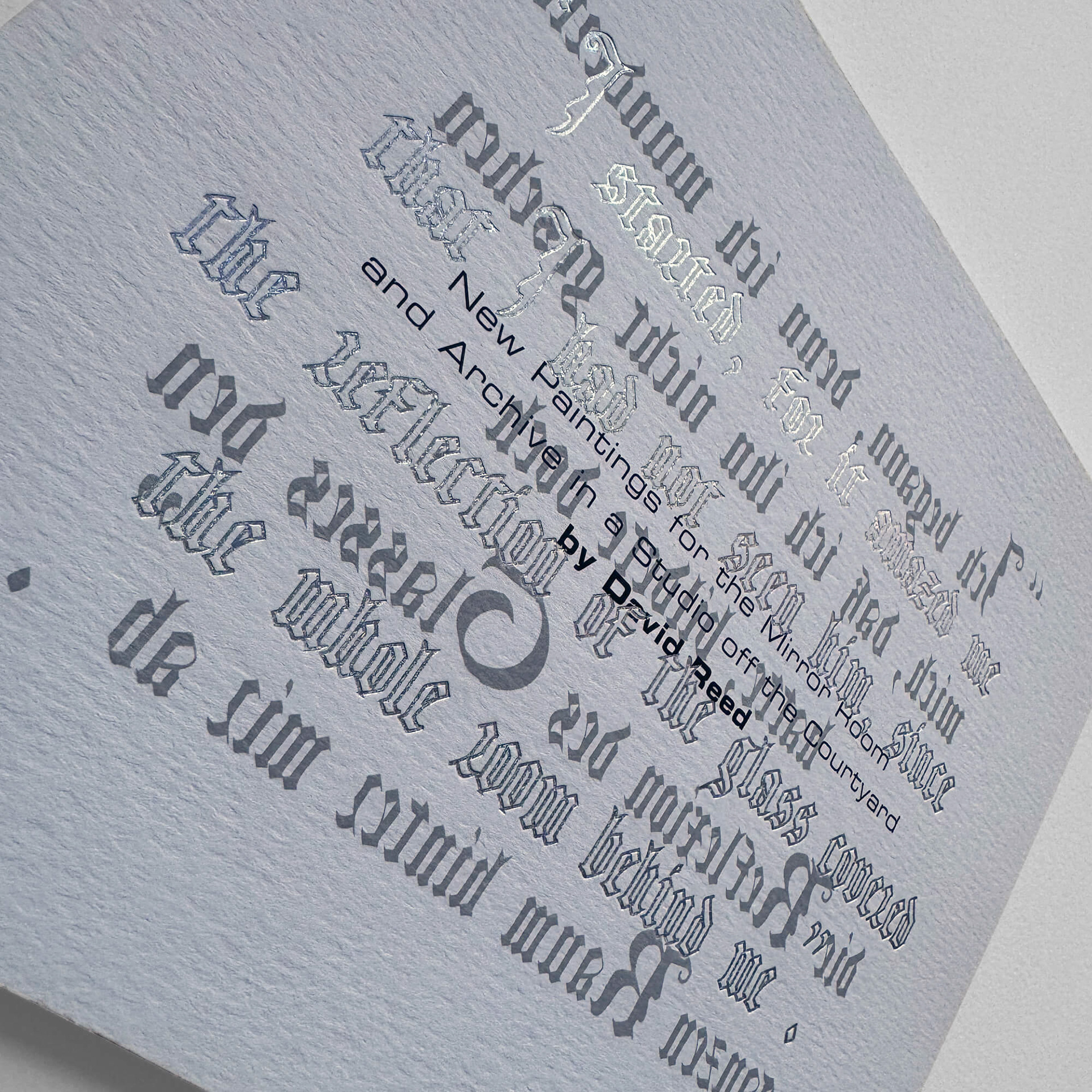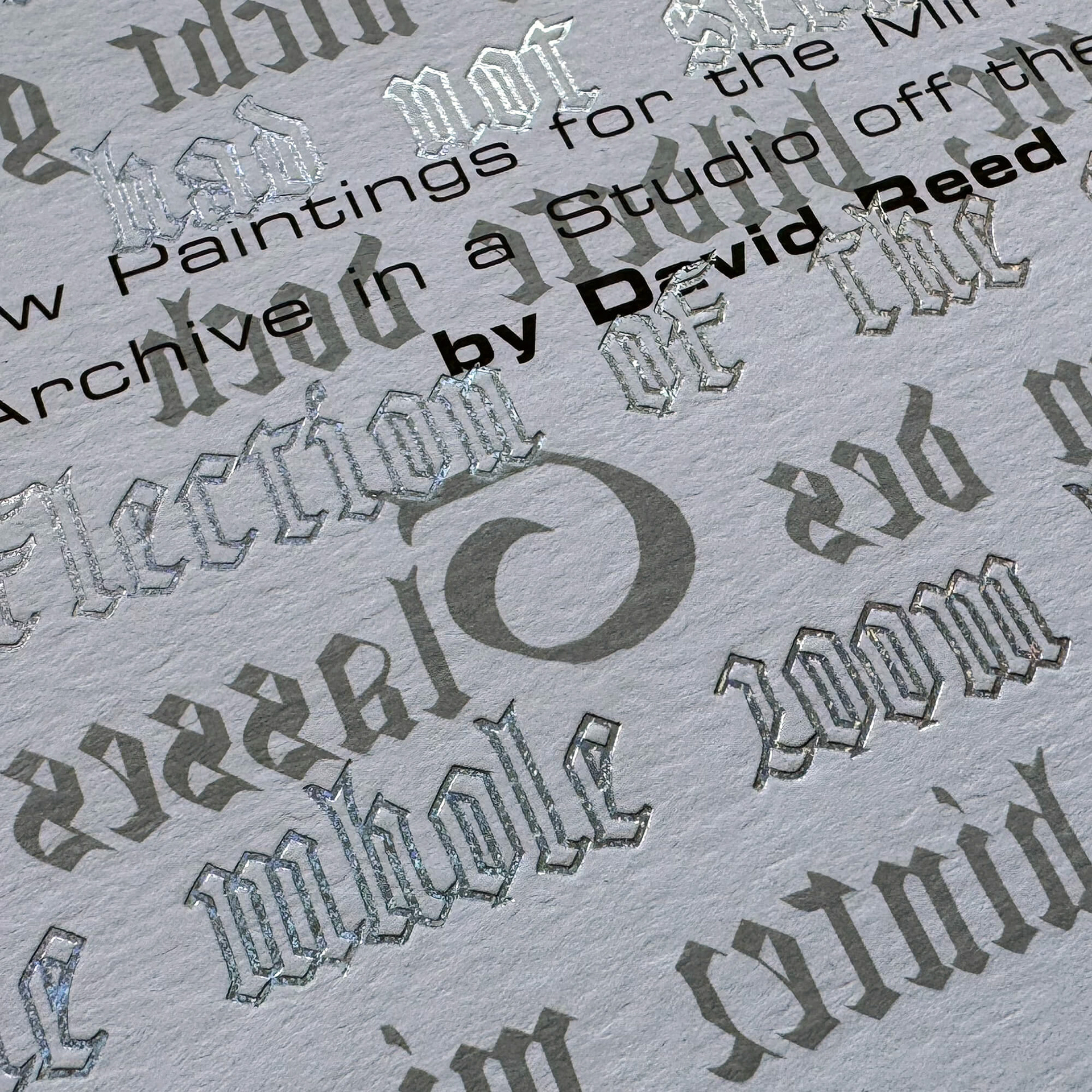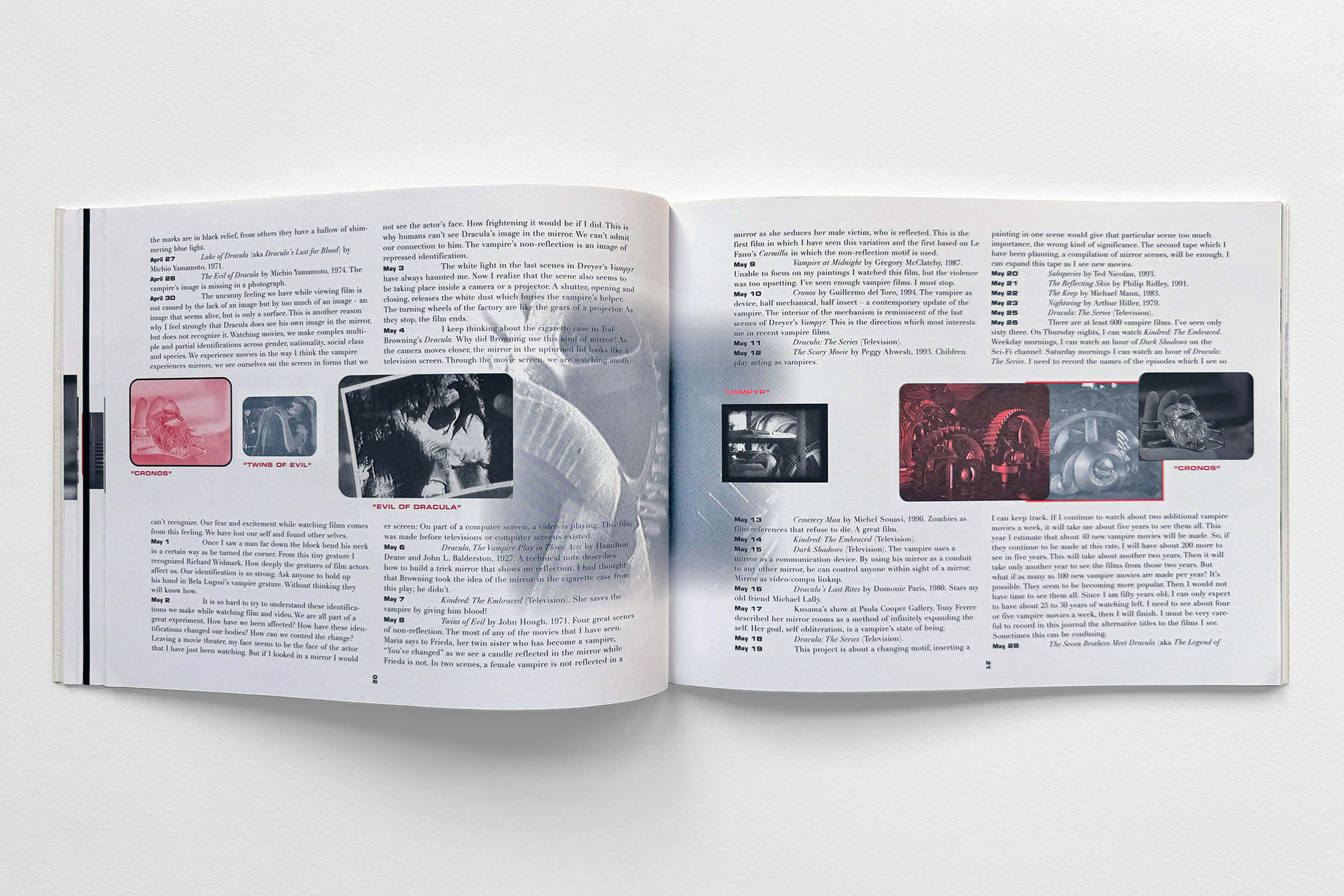‘HE MAKE IN THE MIRROR NO REFLECT’
David Reed is one of today’s most renowned abstract painters. His work is inspired by film, and new media, as well as his ongoing interest in light and color phenomena of earlier periods. Challenging the eye of the beholder, Reed’s dynamic constellations never cease to open up new pictorial spaces: the energetic and singular gesture brushstroke of former works progressively condenses into structures of lines, waves or loops that often seem like edits from some other context, called into offer counterpoint in new visual arrangement.
David Reed is one of today’s most renowned abstract painters. His work is inspired by film, and new media, as well as his ongoing interest in light and color phenomena of earlier periods. Challenging the eye of the beholder, Reed’s dynamic constellations never cease to open up new pictorial spaces: the energetic and singular gesture brushstroke of former works progressively condenses into structures of lines, waves or loops that often seem like edits from some other context, called into offer counterpoint in new visual arrangement.
In an attempt to uncover the origins of the non-reflection motif one needs to interrogate the vampire’s complex relationship to this optical phenomenon. The focus is on Bram Stoker’s handwritten notes for Dracula where the vampire’s lack of a reflection or shadow and where this conceit is extended to include its image in photography and painting.
The contemporary artist David Reed, whose abstract painting is offered as another version of non-reflection. Reed has responded directly to Stoker’s Dracula notebooks in his own ‘vampire painting’, creating a compelling homage to the unmirrorable figure of the vampire.
A vampire doesn’t see himself reflected in a mirror, and perhaps that’s also what it is to look at an abstract painting. What do you see reflected? Not yourself, but something else, something strange. It’s like swimming or any other experience when you lose the contours of your body, and you don’t know where you are.
THE BOOK
This book was published on the occasion of David Reed's exhibition I started, for it amazed me that I had not seen him, since the reflection of the glass covered the whole room behind me at Neue Galerie am Landesmuseum Joanneum, Graz, Austria. Designed by xSITE, the book elaborate the vampire topic around an obscure Styrian chronicle. Not far from Graz, Schloß Hainfeld, a remote water castle in a fast forest was the scene of the first vampire tale. A 1836 travel book, Schloß Hainfeld, or a Winter in Lower Styria by Basil Hall inspired Sheridan Le Fanu to write Carmilla. Carmilla could be called the original vampire novel of modern Europe.




BOOK DESIGN
The book dives into the story and dissects the study into three segments. The vampire journal of over 75 vampire movies by David Reed, the exhibition documentation with full bleed images, and two essays of critical writing.
The 64-page book with 118 illustrations is printed in 2 pms colors on uncoated matte paper (Munken Polar Rough 170 g/m2) with a 4-color high-gloss signature (Favini Bindakote 120 g/m2) in the center to showcase the exhibition in full bleed color images. It has a gatefold (French flaps) softcover, perfect bound, in white cover stock.
The all white cover is printed in one color and has a holographic hot stamping foil for the exhibition title on a heavyweight tactile white cover stock (Gilbert Esse Texture 110lb). The inside gatefold is in 2 pms colors. For the body text we used the font Didot in combination with Euro and Fraktur for titles and captions.










SPECIFICATIONS
Published by Verlag der Buchhandlung Walther Konig
Edited with text by Günther Holler-Schuster and Peter Weibel.
Text by Hanne Loreck, Michael Madore, and David Reed.
Language in English and German
ISBN-10: 3-88 375-255-x
ISBN-13: 978-3883752556
Printer by Klampfer (Gleisdorf, Austria)
Softcover, Perfect Bound
Size: 8.25 inches x 10 inches
Edited with text by Günther Holler-Schuster and Peter Weibel.
Text by Hanne Loreck, Michael Madore, and David Reed.
Language in English and German
ISBN-10: 3-88 375-255-x
ISBN-13: 978-3883752556
Printer by Klampfer (Gleisdorf, Austria)
Softcover, Perfect Bound
Size: 8.25 inches x 10 inches

